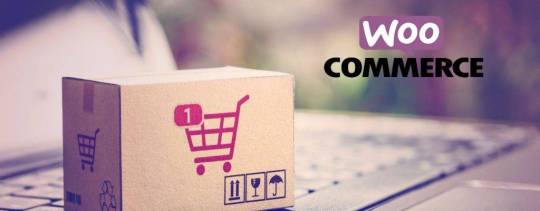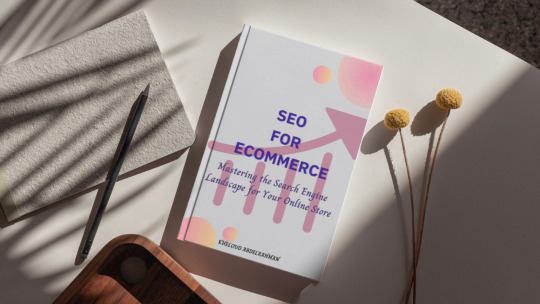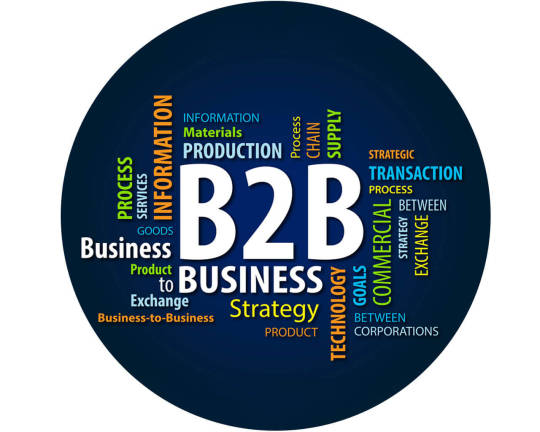#woocommerce b2b
Explore tagged Tumblr posts
Text
WooCommerce Kurulum ve Ayarları
WooCommerce Kurulum ve Ayarları WooCommerce Kurulum ve Ayarları , günümüzde e-ticaret, işletmeler için büyük bir öneme sahiptir ve giderek daha fazla işletme çevrimiçi bir varlık oluşturmayı hedeflemektedir. Bu bağlamda, WordPress ve WooCommerce, işletmelerin kendi e-ticaret sitelerini kurmalarına olanak tanıyan güçlü ve popüler bir platform ikilisidir. Bu makalede, WooCommerce kurulumunun teknik…

View On WordPress
0 notes
Text
🔖There’s another important update with WholesaleX version 2.0.5.
👉 The product ‘Quantity step’ is an important feature for Wholesale users. It’s a way to let users add a certain number of products in increments.
Learn More: https://getwholesalex.com
Here’s a short video to give you a better idea:
3 notes
·
View notes
Text
Woxro: The Bright Head in the Lead of Ecommerce Development
Woxro is one of the highest level e-commerce development companies in the constantly changing digital economy. Woxro assures cutting-edge solutions for businesses with the sophisticated requirement of today's digital economy. Whether it's about B2B and B2C platforms or the most seamless integration, or simply a custom-built solution, the online business experiences get ignited through Woxro's services. Backed with the attitude of innovation and commitment towards making their clients successful, Woxro helps companies make strong digital platforms along with competitive markets. Check out these are the core e-commerce development services by which Woxro comes forward to be a preferred partner for businesses wanting to breathe new life into their online presence. Woxro is the leading ecommerce development company in India and is providing top notch services and solutions for you.

B2B Platform Development
The B2B interaction is at the heart of modern commerce; it has built B2B platforms that make such interactions easy and hassle-free. B2B marketplaces help a company reach its suppliers, shortlist potential partnerships, and make the transactions all from one centralized place. Woxro's B2B platforms are wide-ranging and ensure that customers experience security, reliability, and ease of use in all business operations in order to create confidence and efficient workflows. Woxro's B2B solutions are equipped with real-time inventory management, automated processes, and advanced analytics, meaning businesses can work efficiently and have valuable relationships that last long.
B2C Platform Development
Through ease-of-use, online shops to offer products for shopping, Woxro's B2C platform development services help businesses reach their customers and interact directly with them. Designed to convert visitors into loyal customers, Woxro's B2C platforms include all the comprehensive tools for managing products, processing secure payments, and engaging in more personalized experiences for shopping. Each is optimized to give an easy, enjoyable experience to the user as businesses stretch their reach to the customer, marketing being directed, and giving an enjoyable shopping experience that creates a sale and brand loyalty.

Platform Migration
Moving out from the outdated systems to modern scalable platforms often marks the beginning for businesses that want to remain competitive. Woxro professionals successfully migrate complexly numerous business operations from less than the minimum level of disruption. Woxro takes cautious control of data migration, system configuration, and testing processes while making the move to become more distant in terms of on-premise systems to cloud infrastructure, updating legacy technology, or changing platforms. When businesses engage with Woxro, they embrace the latest technologies, realize cost savings on operations, and boost the performance of the system with business continuity and efficiency intact.
Custom-Designed Platform Development
Woxro realises that every business is unique and has custom platform development services that provide bespoke solutions for a specific goal or workflow in place. These platforms are off-the-shelf by definition, designed from the ground up to meet a precise business need. Woxro's custom solutions are scalable and adaptive, allowing businesses to implement proprietary features, streamline workflows, and maximize flexibility. About Woxro's customization innovation integration: It ensures that the platforms continue to grow with the business and, thus, become an excellent basis for long-term growth as well as a competitive edge in the market.
CMS Integration
The integration of a content management system with your e-commerce platform has vast benefits within the operation, ranging from effective product management to advanced SEO capabilities. Woxro's content management system integration services enable businesses to access a single, easy-to-use interface for managing product descriptions, optimizing search content for better search engine rankings, and personalising shopping experiences. CMS integration, therefore, promotes ease of updates while bringing increased online visibility and engagement from customers. CMS integration helps companies create more engaging and dynamic experiences that talk to customers to convert them.
API Integration
API integration is a necessary concept for e-commerce platforms in an interlinked digital world, integrating with third-party applications, payment systems, and other services. Woxro's API integration services provide smoother interoperability between different software applications for easy information sharing and add-on features. Of course, payment gateway, CRM system, and APIs all resolve issues because their performance can grow without getting disconcerting of existing operations, Woxro ensures that. API integration makes the overall functionality and responsiveness of e-commerce platforms robust, flexible, and scalable enough to expand on further expectations.
Why Woxro for ECommerce Development?
At Woxro, you will find industry expertise, innovative technology and, above all, a client-centric approach that seeks tailored solutions for each business. Ecommerce development with Woxro's services is done to cater for the unique needs of every client so as to ensure robust, scalable solutions adapting to changing market demands. Whether it is a B2B, B2C platform, handling platform migrations, or integration with CMS and APIs, Woxro connects with technical pools of expertise in alignment with strategic insight to yield results. Businesses partner with Woxro to achieve advanced tools and custom solutions in enforcing the new path forward through their digital success.

Conclusion
Woxro e-commerce development solutions give businesses the possibility of a powerful and agile web presence. The products offered by Woxro for creating B2C growth strengthen customer engagement, streamline B2B relations, smooth migrates, and unlock API and CMS integrations that facilitate business clients' digital transformation with the platform. Equipping businesses with solutions that solve the challenges of the digital age, creating future-proof, impact-generating e-commerce, to drive business growth and success-all of these Woxro does.
#ecommerce#ecommerce development agency#ecommerce development services#ecommerce development company#ecommerce website development#ecommerce developers#web developers#web development#web graphics#web resources#shopify#woocommerce#online store#smallbusiness#websitedevelopmentcompany#search engine optimization#web design#website design#web hosting#website#social media#content creation#content creator#cms development services#cms#b2b#b2bmarketing#api integration
4 notes
·
View notes
Link
#B2B#B2C#BigCommerce#C2C#comercioelectrónico#creartiendaonline#e-commerce#estrategiasdeventaonline#hostinge-commerce#integraciónredessocialese-commerce#Magento#negocioenlínea#personalizacióntiendaonline#plataformadee-commerce#plataformasdecomercioelectrónico#PrestaShop#SEOparatiendasonline#Shopify#tiendaenlínea#tiendasenlínea#tiposdecomercioelectrónico#ventajasdele-commerce#WixeCommerce#WooCommerce
0 notes
Text
Discover the Best B2B Marketplaces in Europe for Online Selling!
Our latest CedCommerce study unveils the top platforms to boost your B2B sales in Europe. From comprehensive insights to actionable tips, this article has it all! Click to read: https://bit.ly/433roRk
#ecommerce#smallbusiness#ecommercesale#ecommercebusiness#ecommercesolutions#sellonline#woocommerce#woo#B2B
1 note
·
View note
Text
Was going to write this as a reply to something but realized it needed its own post.
The tl;dr is that, from the looks of it, Automattic absolutely has every intention of turning Tumblr into a marketing media platform.
I work for a marketing company. I build websites.
Specifically, I build websites on Wordpress.org, which is operated by the Wordpress Foundation.
The Wordpress Foundation is the non-profit counterpart to the for-profit company Automattic.
Automattic, as we know, is the company that currently owns Tumblr.
Now, the thing about Wordpress.org (not to be confused with Wordpress.com) is that it's very, VERY popular amongst small businesses. Not only can you build a fully-customizable website with relative ease, you can also add an online shop using another Automattic product: Woocommerce.
Not too long ago, I noticed a new feature was added to Woocommerce: A button next to each Woocommerce product which allows you to Blaze them to Tumblr right from the comfort of your dashboard:

This is what I get when I click that little "Blaze" button...

As someone who understands these tools, I understand the potential implications of these features:
The Blaze feature is basically an up-and-coming ad campaign system that's directly integrated with Woocommerce websites, which I think is the first ad marketing system of its kind. You don't have to log into a social media account to advertise your products, use a second-party integration, or even pay another service to manage your social media ads. It's all baked right into your business's website.
THIS is their planned money-maker, folks, not the rainbow checkmarks or crab armies. And the reason why Automattic would do this kind of thing is simple: Businesses are wealthier than individuals. By implementing a B2B service, Automattic can make more money off of Tumblr than user subscriptions and shoelaces will ever provide.
It's all the same song and dance. Businesses can now shove more ads into your face in a new, convenient fashion. It'll be ads that don't look like ads disguised amongst ads that do look like ads, just like it is with Facebook, TikTok, Instagram, and literally every other marketing media service that calls itself a "social" media.
(Tumblr's new video feature? My guess is that it's there to prepare for video-format Blaze campaigns. Influencer-style videos are the only kind of ad format Gen-Z is receptive to, which is why you're suddenly seeing videos on every platform.)
All they really gotta do now is make Tumblr look appealing to the normies so they can draw in a userbase that isn't trying to escape the onslaught of commercialism that plagues other sites.
Tumblr is one of the last true social medias we have; a place where content is made purely for the sake of talking about it. But given the writing on the wall...I doubt it'll stay that way.
2K notes
·
View notes
Text

Starting an e-commerce business can be an exciting venture with immense potential. However, with the opportunities come challenges and uncertainties. Before diving into the world of online retail, it’s crucial to plan carefully and set a solid foundation. Here are some essential tips to consider before launching your e-commerce business:
1. Conduct Market Research
Understanding the market is fundamental to any successful business. Start by identifying your target audience and analyzing competitors. Research trends, customer preferences, and potential gaps in the market. Tools like Google Trends, social media analytics, and industry reports can provide valuable insights. This research will help you tailor your products or services to meet market demands and differentiate yourself from competitors.
2. Define Your Business Model
E-commerce offers various business models, such as B2C (Business to Consumer), B2B (Business to Business), C2C (Consumer to Consumer), and subscription-based models. Determine which model aligns with your goals and resources. Each model has its own set of challenges and requirements, so choose one that best fits your product or service and target market.
3. Create a Solid Business Plan
A comprehensive business plan serves as a roadmap for your e-commerce venture. Outline your business goals, strategies, target audience, marketing plan, financial projections, and operational plan. This document will not only guide your efforts but also help secure funding if needed. A clear plan can keep you focused and organized as you navigate the complexities of launching and running an e-commerce business.
4. Choose the Right E-Commerce Platform
Selecting the right e-commerce platform is crucial for the success of your online store. Popular platforms like Shopify, WooCommerce, Magento, and BigCommerce each offer unique features and capabilities. Consider factors such as ease of use, scalability, customization options, payment gateways, and integration with other tools. The platform should align with your business needs and provide a user-friendly experience for both you and your customers.
5. Develop a User-Friendly Website
Your website is the face of your e-commerce business. Ensure it’s designed to be user-friendly, visually appealing, and optimized for mobile devices. A clean, intuitive layout with easy navigation will enhance the shopping experience and reduce cart abandonment rates. Focus on high-quality images, detailed product descriptions, and a seamless checkout process. Additionally, implement search engine optimization (SEO) strategies to improve your site’s visibility in search engines.
6. Implement Secure Payment Processing
Security is a top priority in e-commerce. Customers need to trust that their payment information is safe. Choose a reputable payment gateway and ensure your website uses SSL certificates to encrypt data. Additionally, offer multiple payment options, including credit/debit cards, digital wallets, and other payment methods that are popular with your target audience.
7. Plan Your Logistics and Supply Chain
Efficient logistics and supply chain management are vital for e-commerce success. Develop a strategy for inventory management, warehousing, and shipping. Decide whether you’ll handle fulfillment in-house or partner with third-party logistics providers. Consider shipping options, delivery times, and costs. A smooth and reliable fulfillment process can significantly impact customer satisfaction and repeat business.
8. Craft a Marketing Strategy
Effective marketing is essential to drive traffic and sales to your e-commerce store. Develop a multi-channel marketing strategy that includes social media, email marketing, content marketing, and paid advertising. Create engaging content, run promotions, and leverage social media platforms to build brand awareness and attract customers. Monitor and analyze the performance of your marketing efforts to refine your strategies over time.
9. Focus on Customer Service
Exceptional customer service can set your e-commerce business apart from competitors. Provide multiple channels for customer support, such as live chat, email, and phone. Ensure timely responses to inquiries and resolve issues promptly. Building strong customer relationships and encouraging feedback can enhance customer loyalty and drive positive reviews.
10. Monitor and Adapt
The e-commerce landscape is constantly evolving. Regularly review your business performance, track key metrics, and gather customer feedback. Stay informed about industry trends and technological advancements. Be prepared to adapt your strategies and operations based on insights and changes in the market.
#ecommerce#marketing#business#digitalmarketing#ecommercebusiness#entrepreneur#onlineshopping#website#seo#webdesign#b#marketingdigital#onlinebusiness#branding#shopify#smallbusiness#socialmediamarketing#webdevelopment#online#amazon#shopping#onlinestore#onlineshop#design#ecommercewebsite#dropshipping
5 notes
·
View notes
Text

SEO for E-commerce: Mastering the Search Engine Landscape for Your Online Store + Affiliate marketing Ebook FREE.
In today's competitive online marketplace, standing out from the crowd is crucial for e-commerce businesses. This comprehensive guide empowers you to unlock the secrets of e-commerce SEO, providing a roadmap to optimize your website for both search engines and user intent.
eCommerce SEO: A Complete Guide? Sure, please!
It's difficult to optimize for search engines in eCommerce. However, it will happen once you've finished reading eCommerce SEO Mastery. Get everything you need in one location and save time.
Who Should Read This eBook?
Excellent query!
SEOs who are interested in discovering the most crucial secrets of eCommerce SEO. It will be especially helpful for novice or seasoned B2B SEOs who are just getting started in eCommerce or who wish to put the pieces together.
Marketers Who Are Willing to Use the Marketing Budget Efficiently
Shop owners are hoping to increase foot traffic and revenue.
Is this book exclusive to online stores?
No, not at all!
This eBook will assist any online store in leveraging SEO to increase traffic and sales. However, the advice I provide here is equally applicable to other kinds of websites, like:
Dealerships
Market Places
Directories of Real Estate
Any content management system, including X-Cart, Magento, WooCommerce, Shopify, and others, can use the strategies I discuss in the training.
#seo #affiliatemarketing #onlinebusiness
#seo#seo services#marketing#affiliatemarketing#twitch affiliate#make money as an affiliate#seo marketing#seo mastery#make money online#make money from home
6 notes
·
View notes
Text
The Best B2B Ecommerce Platform for 2023
There are a lot of factors that overlap between B2C and B2b selling.
whether you're selling to a company or an end-customer, you're going to need a strategy for building relationships with your target audience. This means investing in tools like landing page builders, email marketing that you can automate, and even social media integrations.
To save yo some cruicial time and effort in the hunt for the right ecommerce capabilities, we've put together this list of our top B2b ecommerce website builders and tools.
Shopify Plus: It is a cloud-based, fully hosted e-commerce platform that provides businesses with an all-in-one solution to sell their products online. It has robust B2B features like custom pricing, wholesale channel, and purchase orders.
Magento Commerce: It is an open-source e-commerce platform that provides businesses with a flexible and customizable solution for their B2B needs. It has features like customer segmentation, account management, and custom pricing.
BigCommerce: It is a cloud-based e-commerce platform that provides businesses with a feature-rich solution for their B2B needs. It has features like customer groups, custom pricing, and purchase orders.
WooCommerce: It is an open-source e-commerce platform that provides businesses with a scalable and customizable solution for their B2B needs. It has features like customer management, product catalog management, and order management.
Dial42: Dial42 provide a convenient way for businesses to source products and services, compare prices, and negotiate with suppliers without having to go through traditional procurement channels. Dial42 also offer various value-added services such as logistics, payment processing, and dispute resolution to streamline the buying and selling process for businesses.

#B2B#B2C#B2BMarketing#B2BSales#B2BLeadGeneration#B2BBusiness#B2BMarketplace#ecommerce#Marketplace#Sales#BusinessListing#BusinessDirectory#FreeWebStore#ConnectSellGrow#marketing
3 notes
·
View notes
Text
#EcommerceWebsiteDevelopmentServices#EcommerceWebsiteDevelopmentCompany#ShopifyWebsiteDevelopmentService#WooCommerceWebsiteDevelopmentServices#EcommerceStoreDevelopmentServices
0 notes
Text
Marketplace integration for luxury suppliers - multiple integration methods to seamlessly incorporate its catalog into their online stores or marketplaces.
Luxury Distribution stands at the forefront of the dropshipping industry, offering a user-friendly B2B Live Catalog with real-time product availability. This platform seamlessly integrates with major platforms like Shopify and WooCommerce, providing API access and other formats. With years of expertise in designer brand wholesale distribution, they take pride in delivering exceptional customer service in rapid response times. They ensure a reliable and efficient experience for dropshipper and large marketplaces.

Since its inception in Milan, Italy, Luxury Distribution is revolutionizing the B2B2C (Business-to-Business-to-Consumer) fashion technology landscape. As a leading dropshipping and marketplace integration for luxury suppliers, it connects distributors and brands with a global network of retailers and online marketplaces. This extensive catalog features high-end clothing, shoes, bags, watches, jewelry, accessories, makeup cosmetics, and perfumes.
What do you mean by Marketplace Integration for luxury suppliers?
Seamless Catalog Integration
Luxury Distribution, an effortless marketplace integration for luxury suppliers speaks your language and everyone else's. It provides clients with multiple integration methods to seamlessly incorporate its catalog into their online stores or marketplaces.
Integration Methods
The marketplace integration package includes dedicated support for your tech team, ensuring successful catalog integration into your system. It offers several formats for integration such as REST API, XLSX, JSON, CSV and XML
Partnering for Success
Luxury Distribution believes in fostering partnerships that is not just limited to vendor relationships. Its offerings include Customer Success Manager, Onboarding Specialist, and Ongoing Support
Dropshipping and Marketplace Selling
Meeting Customer Demands
Your customers expect more. Are you ready to take control of your marketplace?
LD Marketplace Services
Luxury Distribution provides two options for marketplace relationships-
1P First Party - The marketplace purchases products from it in wholesale and sets their own pricing. It handles logistics and shipping directly to their clients.
3P Third Party – It maintains its own storefront on the marketplace, controlling pricing and logistics. The marketplace earns a commission on sales generated through its storefront.
Why Choose Us
Bridging gamp among distributors, brands, and retailers
Luxury Distribution specializes in bridging distributors, brands, and retailers through a cutting-edge luxury digital catalog. Since day one, its objective is to simplify dropshipping for its clients.
Its main Characteristics
No-minimum order policy.
Integration with multiple suppliers and brands into one centralized system.
Complete 3PL (Third-Party Logistics) services, handling all shipping and logistics, so you can focus solely on marketing and bringing in customers.
Loyalty points and rewards programs
It provides corporations, banks, hotels, and airlines with a loyalty catalog for VIP customers, allowing their loyalty points and rewards programs to be redeemed for luxury goods.
Its Working
Your Customer Places an Order: The customer places an order on your store and pays the retail price.
Order Processing: The order is fetched by the Luxury Distribution Cloud Application.
Order Fulfillment: Luxury Distribution ships the product directly to your customer, ensuring a seamless experience for both you and your clients.
#marketplace integration for luxury suppliers#luxury brands dropshipping#designer brand dropship#designer brand dropshipping#luxury supplier marketplace#e commerce platform integration#luxury brand marketplace#marketplace integration solutions#luxury supplier platform
0 notes
Text
📣 WholesaleX v2.0.5 is now LIVE!
There are a couple of things new to WholesaleX v2.0.5.
Among many improvements, there were 2 new user-suggested features. Both are simple, yet impactful.
🛒 One of them is the new discount setting. From the WholesaleX settings, you can set discounts:
On the product discount price 👉 All you have to do is:
Set the product pricing on WooCommerce Go to WholesaleX settings Select one of the options to apply the discount Save it!
👉learn more: www.getwholesalex.com
Here’s a quick and dirty tutorial 👇
0 notes
Text
How to Choose the Right Ecommerce Platform for Your Business
Launching an ecommerce store is exciting, but one of the biggest challenges businesses face is choosing the right platform. Should you go for Magento, Shopify, or WooCommerce? Each platform has its strengths and weaknesses, and the best choice depends on your business goals, budget, and technical expertise.
At iCodeBees, we help businesses select the perfect ecommerce platform that meets their needs. In this guide, we’ll compare Magento, Shopify, and WooCommerce to help you make an informed decision.
Magento – The Powerhouse for Large Ecommerce Stores
Magento is an enterprise-grade ecommerce platform designed for businesses that require scalability, customization, and flexibility. It’s best suited for medium to large businesses with complex product catalogs and unique requirements.
🔹 Pros: ✔ Highly customizable with advanced features ✔ Scalable for large businesses handling high traffic ✔ Supports multiple storefronts from a single admin panel ✔ Robust security and SEO features
🔹 Cons: ❌ Requires technical expertise for development ❌ Higher setup and maintenance costs
🛒 Ideal For: Enterprise businesses, large online retailers, and B2B companies.
📌 Want to learn more? Read about our magento ecommerce website development services.
Shopify – The User-Friendly Ecommerce Solution
If you’re looking for an easy-to-use, fully hosted solution, Shopify is a great option. It’s perfect for small to medium-sized businesses that want a hassle-free ecommerce setup without worrying about hosting and technical maintenance.
🔹 Pros: ✔ Quick and easy setup ✔ User-friendly interface with built-in ecommerce tools ✔ Managed hosting, security, and updates ✔ Large app store for adding additional functionality
🔹 Cons: ❌ Limited customization compared to Magento ❌ Higher transaction fees on lower-tier plans
🛒 Ideal For: Small businesses, startups, and entrepreneurs looking for a simple ecommerce store.
WooCommerce – The Flexible WordPress Plugin
WooCommerce is a great option for businesses already using WordPress. It offers high flexibility, allowing you to turn your WordPress website into a fully functional ecommerce store with custom features and integrations.
🔹 Pros: ✔ Free and open-source with customization options ✔ Seamlessly integrates with WordPress websites ✔ Supports a wide range of plugins and extensions
🔹 Cons: ❌ Requires additional plugins for advanced features ❌ Hosting and security depend on third-party providers
🛒 Ideal For: Businesses looking for a cost-effective ecommerce solution with content marketing integration.
📌 Not sure which platform is right for you? Get expert advice here
0 notes
Text
WooCommerce is free and open-source, highly adaptable, and has strong analytics. Shopify gets slow when you start installing add-ons and harms conversion rates; shoppers can’t edit their orders. WooCommerce is WordPress’ native e-commerce plugin that transforms ordinary websites into retail platforms. As an open-source plugin, it’s available to download for free, and you have full control over your e-commerce site and its code. Thanks to its advanced extension functionality, it is dependable and versatile. The plugin has tens of free themes, including fashion, beauty, deli, furniture, mobile phones, watches, gardening, electronics, and other e-commerce stores in 2024. Capabilities for integration The tool is highly adaptable when it comes to linking any third-party tech platform with your online store. The integration with WordPress makes it possible to incorporate order fulfillment systems, a CRM system, tax calculation, third-party delivery companies, and other elements. Strong analytics capabilities WooCommerce’s inbuilt statistics provide helpful details about your e-commerce without any additional effort. You will receive information on customer shopping habits and behavior, monthly sales volume and totals, etc. A wide variety of reliable web hosting providers The number of WooCommerce web hosts you can choose from can be overwhelming. To narrow your selection down, look for a CDN, daily backups, and server-side caching. A CDN is a reliable site acceleration function that hosts static files, like JavaScript and CSS, on a third-party server. Your visitors can open your website quickly because it’s displayed from the server closest to them. The best web hosting for WooCommerce will have this feature. CDNs are essential for ecommerce platforms because the speed affects SEO and conversion rates. Higher loading speeds can help increase the total traffic to your pages, too. Disadvantages of Shopify for ecommerce The main disadvantage of Shopify is that it becomes slow when you start installing add-ons. It slows down significantly when the number of add-ons exceeds 20. Slow services convert worse More than 80% of B2B pages load in up to five seconds. If a site loads in five seconds, its conversion rate is three times lower than a site that loads in one second. This tendency isn’t limited to B2B. According to Cloudflare data, pages that load in 2.4 seconds display a conversion rate of 1.9%. The rate drops to 1.5% with load time of 3.3 seconds, below 1% at 4.2 seconds, and 0.6% at 5.7+. Companies like Walmart, Mobify, and COOK have done studies on conversion rates and load time with similar findings. Walmart found that conversion increases by 2% for every second in load time improvement. Mobify found that conversion increases by 1.11% for each 100ms in improvement, and COOK achieved 7% conversion growth by bringing page load time down by 0.85 seconds. Now, let’s see how these numbers translate to revenue. With a one-second improvement in load time, a corresponding 2% conversion increase, and $10 million in annual sales revenue, the revenue increase is $200,000 a year! There are no Shopify Payments Shopify charges a transaction fee for using an external payment gateway. You don’t pay this fee if the customer chooses to pay cash on delivery or bank transfer. You can’t edit orders It’s easiest to optimize conversion rates in the area closest to the transaction, which is the cart page. Attempting to optimize the homepage for conversion is a mistake because the customer doesn’t have to go through it to order. If they want to edit their order, Shopify doesn’t let them, and they might abandon their cart. Slow service is another disadvantage. Google downgrades the e-commerce website and it acquires less organic traffic. Final say With its open-source nature, WooCommerce allows you to adapt your online store without the constraints any platform would impose. Its integration
with the world’s leading CMS provides extensive plugin options and a lower total cost of ownership, allowing it to scale up with your business. WooCommerce is superior to Shopify if your focus is on control, conversion rates, adaptability, and cost-effectiveness.
0 notes
Text
The Future of Online Shopping: Why Choose Our E-commerce Development Services
In the fast-paced digital era, having a robust e-commerce platform is no longer optional for businesses — it’s a necessity. At First Rite IT Services, we specialize in creating cutting-edge e-commerce solutions that empower businesses to thrive in the competitive online marketplace. Whether you're a startup or an established enterprise, our tailored e-commerce development services cater to your unique business needs.
Why E-commerce Matters More Than Ever
E-commerce is transforming the way businesses operate. It offers customers the convenience of shopping anytime, anywhere, while businesses gain access to a global audience. By investing in a well-designed e-commerce platform, you can:
Boost sales and revenue
Enhance customer engagement
Streamline operations
Gain valuable customer insights

Our Comprehensive E-commerce Development Services
At First Rite IT Services, we offer a full suite of e-commerce development services designed to help you succeed:
Custom E-commerce Website Design: Create visually appealing and user-friendly websites tailored to your brand identity.
Platform Expertise: Build on popular platforms like Shopify, Magento, WooCommerce, or custom solutions.
Mobile Optimization: Ensure your e-commerce store is fully responsive and provides a seamless experience on any device.
Secure Payment Integration: Implement reliable payment gateways for smooth and secure transactions.
SEO-Ready Solutions: Optimize your website for search engines to attract organic traffic.
Maintenance and Support: Provide ongoing technical support to ensure your e-commerce platform runs flawlessly.
Why Partner With First Rite IT Services?
Expertise and Experience: With years of experience, our team understands the nuances of e-commerce development.
Customer-Centric Approach: We prioritize your business goals and tailor our solutions accordingly.
End-to-End Services: From planning to post-launch support, we’re with you every step of the way.
Cost-Effective Solutions: Our services are designed to deliver maximum value within your budget.
Success Stories
We’ve helped numerous businesses transform their online presence and achieve remarkable growth. Our portfolio showcases diverse and successful projects in everything from retail to B2B e-commerce.
Ready to Elevate Your E-commerce Game?
Let First Rite IT Services help you build an e-commerce platform that stands out in the crowded digital space. Whether you’re looking to launch a new store or revamp your existing one, we’ve got you covered.
Contact us today to discuss your e-commerce needs and take the first step toward online success!
0 notes
Text
How to Start an E-Commerce Business: A Step-by-Step Guide
Starting an e-commerce business has never been more accessible, thanks to the rise of online platforms, digital payment systems, and social media marketing. Whether you're selling products you make or curating goods from other suppliers, starting an e-commerce business can be a profitable and rewarding venture. Here’s a step-by-step guide to help you get started:
1. Identify Your Niche
The first step is to identify a niche that aligns with your passion or expertise. Consider products or services that solve a problem or meet a need in the market. Research competitors to identify gaps you can fill, ensuring there’s demand but not oversaturation in your chosen market.
2. Create a Business Plan
A solid business plan will serve as the foundation for your e-commerce business. Outline your goals, target audience, unique selling propositions (USPs), and financial projections. Your business plan should also cover how you plan to acquire customers, your pricing strategy, and a roadmap for growth.
3. Choose a Business Model
Decide whether you will be running a business-to-consumer (B2C), business-to-business (B2B), or consumer-to-consumer (C2C) model. Other models to consider include dropshipping, where you sell products without holding inventory, or white-labeling, where you rebrand existing products.
4. Set Up Your Online Store
Next, you need to choose an e-commerce platform to host your store. Popular platforms include Shopify, WooCommerce, and BigCommerce. These platforms offer customizable templates, payment gateways, and inventory management tools. Ensure your website is user-friendly and mobile-optimized, as most consumers shop via their smartphones.
5. Source Your Products
If you’re selling physical products, find reliable suppliers or manufacturers. This could be done through wholesalers, dropshipping suppliers, or by creating your own products. Be sure to evaluate product quality, shipping times, and supplier reliability before committing.

6. Set Up Payment Processing
Choose a payment processor like PayPal, Stripe, or integrated gateways provided by your e-commerce platform. Make sure the payment options are secure, and offer a variety of methods (credit cards, e-wallets) for customer convenience.
7. Market Your Store
With your store set up, focus on marketing to drive traffic. Leverage social media platforms (Instagram, Facebook, TikTok), invest in SEO to increase organic traffic, and run Google Ads or social media ads to capture the attention of potential buyers.
8. Customer Service and Scaling
Provide excellent customer service through fast response times, easy returns, and personalized experiences. As your business grows, explore options like outsourcing, hiring employees, or expanding your product range.
Starting an e-commerce business requires careful planning and execution, but with the right strategies, you can build a thriving online store that meets the needs of your customers.
START YOUR BUSINESS TODAY
0 notes